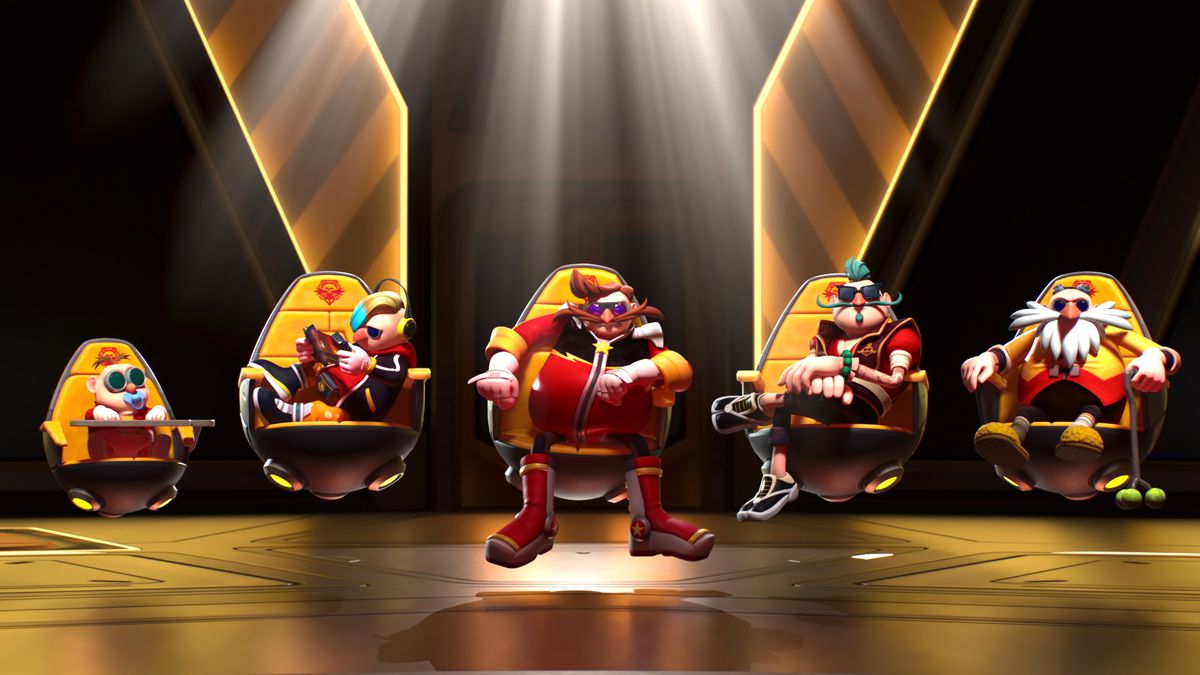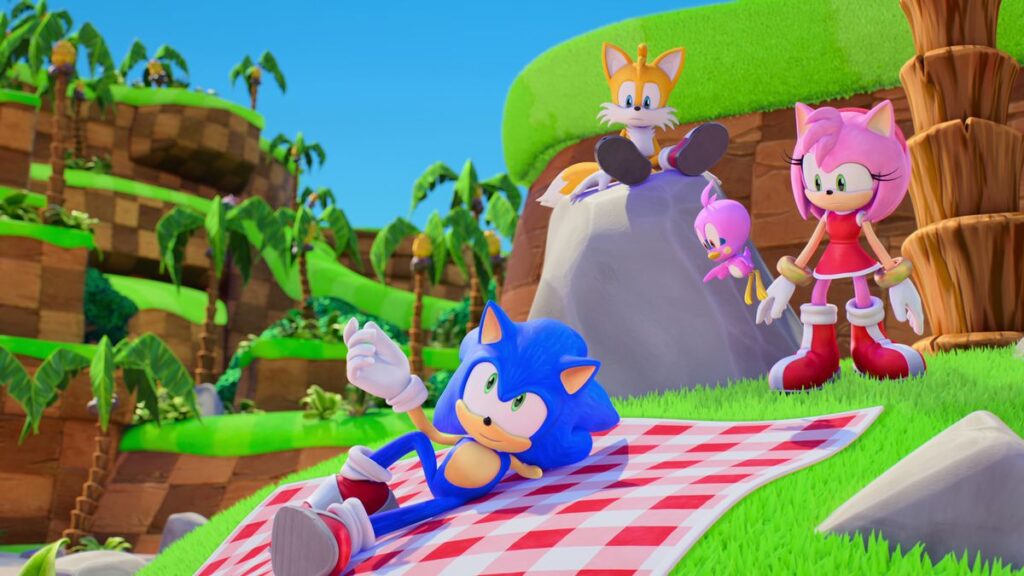The release of every new Sonic the Hedgehog installment feels like a flip of a coin. You either get a game that serves as a breath of fresh air and receives acclaim from critics and fans alike, or you get a game that fails to live up to the potential of one of gaming’s most iconic characters. Of course it’s not like the franchise has always had the reputation it has today; the classic Sonic games are beloved to this day, bringing together gameplay and designs that evoke a sense of speed and an air of cool with stories that are either fueled by subtle but important messages of activism and rebellion, or are character-driven dramas that bring the anthropomorphic creatures to life.
But Sonic’s ventures into other mediums have had a far greater success rate. The Sonic comics — with their wild and bonkers stories, and incredible depth of lore, a cast of characters that would make Game of Thrones feel small, and plots that have such strange occurrences as two joke characters becoming all powerful demigods — have always done well. Once they got rid of the teeth, the film franchise soared with audiences and critics. Sonic’s appearances in animation are also much beloved with fans; successfully managing to capture the essence of the character — and in a medium that can take full advantage of his cartoonish appearance and speed. So when Netflix announced it was producing Sonic Prime, I was more than a little excited. Here was a chance to once again delve into the world of the Blue Blur and see just what new fast paced action could be pulled from the franchise.
And it was good. In fact, it was really good. And the biggest reason why is because Sonic Prime would have been a really good Sonic game.
Image: NETFLIX
Sonic Prime is in no way a complicated story. The series, created in a co-production by Sega, Man of Action Entertainment, and WildBrain studios and animated by Netflix Animation, runs under the assumption that anyone watching knows the broad strokes of the franchise. Season 1 opens with Sonic and his gang fighting Eggman for the latest Mcguffin he will use to conquer the world: the Paradox Prism, a stone containing unknown power. Fairly standard set up, right? Sonic thinks so too, so in classic Hedgehog style he rushes in and joins the fight, ignoring the warnings from his friends. Why shouldn’t he? He’s Sonic the Hedgehog! But that cockiness leads to the shattering of the Paradox Prism, and a main event that goes multiversal.
Sending Sonic into the multiverse allows the creative team to use iconography, imagery, and audio from every era of Sonic, warping and twisting it in different ways to create a feeling that is familiar, yet unknown. Every world in Prime is a variant of Green Hill zone, either urbanized, overgrown, or flooded, yet a few key set pieces remain such as Green Hills iconic loop, or the palm trees that line the background of the franchise’s first ever level. The premise also gives Sonic a chance to grapple with the consequences of his actions first hand, in worlds where Eggman won or his friends were divided and fighting amongst themselves without his influence to lead them. Rather than letting him simply speed to victory, each new multiversal zone forces him to actually slow down for a change and see the world around him, and his part in it. It’s the exact kind of message-driven storytelling that’s been present in all of the great Sonic games — be it Sonic The Hedgehog 2 on the Sega Genesis, the Sonic Adventures games on the Sega Dreamcast, or even the few well received Modern Stories — such as Sonic Colors and the classic throwback Sonic Mania.
Every time Sonic travels to one of these new worlds within the Shatterverse, his shoes and gloves are altered in order to provide an advantage in each world — in a choice that echoes upgrades that we’ve seen in games like Sonic Adventure 2. In an overgrown Green Hill, these are claws to climb and cut down trees, in the flooded world they’re hoverboots like Shadow’s, to overcome and deal with Sonic’s fear of water. The twists give each new world a self-contained story, and design variety that makes you truly appreciate the differences in each version of Green Hill.
In contrast, modern Sonic games have fallen into the trap of feeling rather familiar, unlike the show which offers unique and alternative looks at Sonic’s iconic imagery — these games tend to railroad you through zones that long-time fans are extremely familiar with. Green Hill has appeared in no less than twenty six games since the series inception — and many of them blend into the same blur of backgrounds. During the 2D games, the stages offered multileveled designs — allowing you to speed through on the upper sections, or focus on the slower, more puzzle-based section below. These design elements stayed in Sonic Adventure and Adventure 2, offering multiple routes or gameplay options, so that every level felt fresh and offered something different to appeal to a wide range of players — however, as time has gone the franchise has stripped back these more varied options, leaving you to mostly run through the same few zones every couple of years.

Image: Netflix
But the issue goes beyond just level design. Sonic has been coasting off of his past ever since 2011’s Sonic Generations, in which the game is a loving tribute to the history of the franchise — combining both modern and classic Sonic in a story that takes them across some of the most well known stages from the across the franchises long history. Every game since then has featured some kind of throwback to the classic era. 2013’s Sonic Lost Worlds brought back the Wisps from Sonic Colors (the best modern sonic game to many people), Sonic Mania was basically a sequel to Sonic and Knuckles. The following game, Sonic Forces, brought back Classic Era Sonic, his gameplay from Generations, the Wisps, and tied into Sonic Mania. This year’s Sonic Frontiers features small set pieces from the past that have modern Sonics movements, similar to Generations, but they pass by so quickly that they struggle to be enjoyable as you spend more time in Frontiers open world. Don’t get me wrong, Sonic has always been a great franchise — but you can only do so many callbacks before you simply become a scrapbook of better pieces. Sonic Prime is a good chance for developer Sonic Team to continue to honor the past and look to the future.
Sonic Prime doesn’t abandon what has worked in the games; from an aesthetic perspective the franchise’s use of iconic imagery, audio, and designs leans heavily on the classic games with a modern paint job. The voice acting and script leads to characters that are nowhere near as one note as they have often become in Sonic’s later installments, and the reduced cast means that Sonic gets to keep his ensemble, but not so many that anyone feels excluded. Shadow in particular has been transformed from one of the edgiest characters in western media to a more focused and mature individual, constantly exasperated at the hijinks of his blue counterpart. And with the team exploring the multiverse, we get to see different versions of these characters, the standout being a nihilistic and slightly more rough-around-the-edges version of Tails, who works as a constant reminder of not only Sonic’s influence, but also his failings.
With the Shatterverse, anything in the Sonic universe seems possible. There’s plenty of potential to become a multi-seasoned epic story. I will be watching with interest, but also a bit of sadness. It feels like it’s screaming out to be the video game that finally gets Sonic back among gamings greats. To be the game that finally lets Sega and Sonic Team try something fresh while still keeping things familiar, all wrapped up in the first story in over a decade that has actually made me care about these characters again. It is everything I’ve ever wanted from a Sonic game. I just wish it was one.

